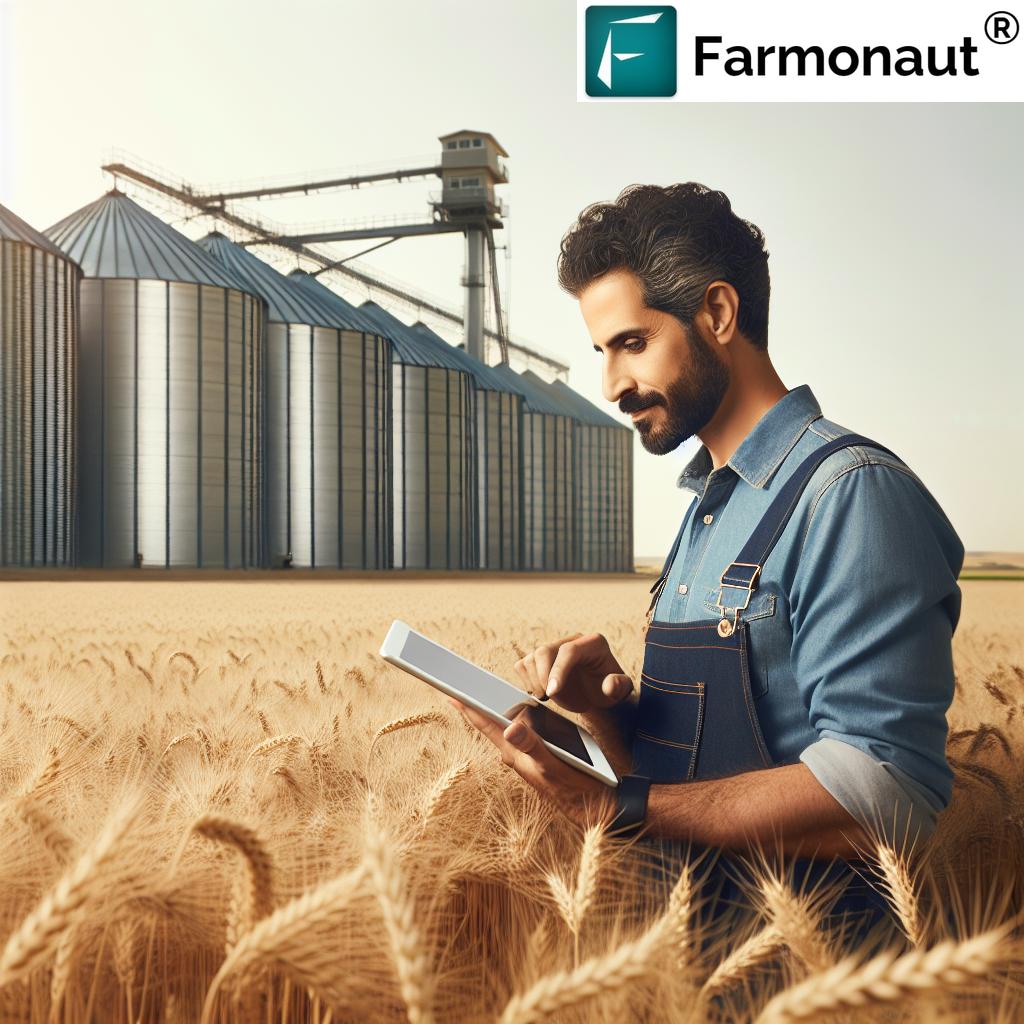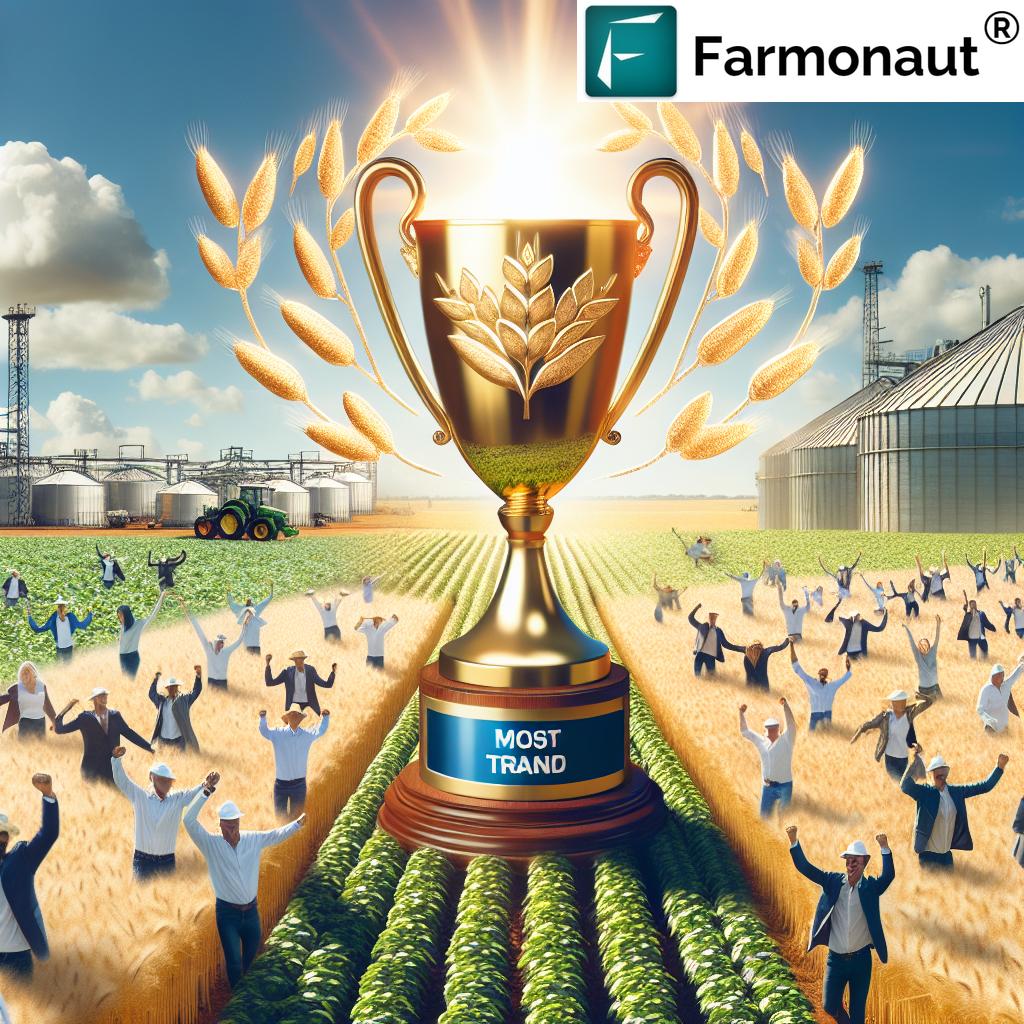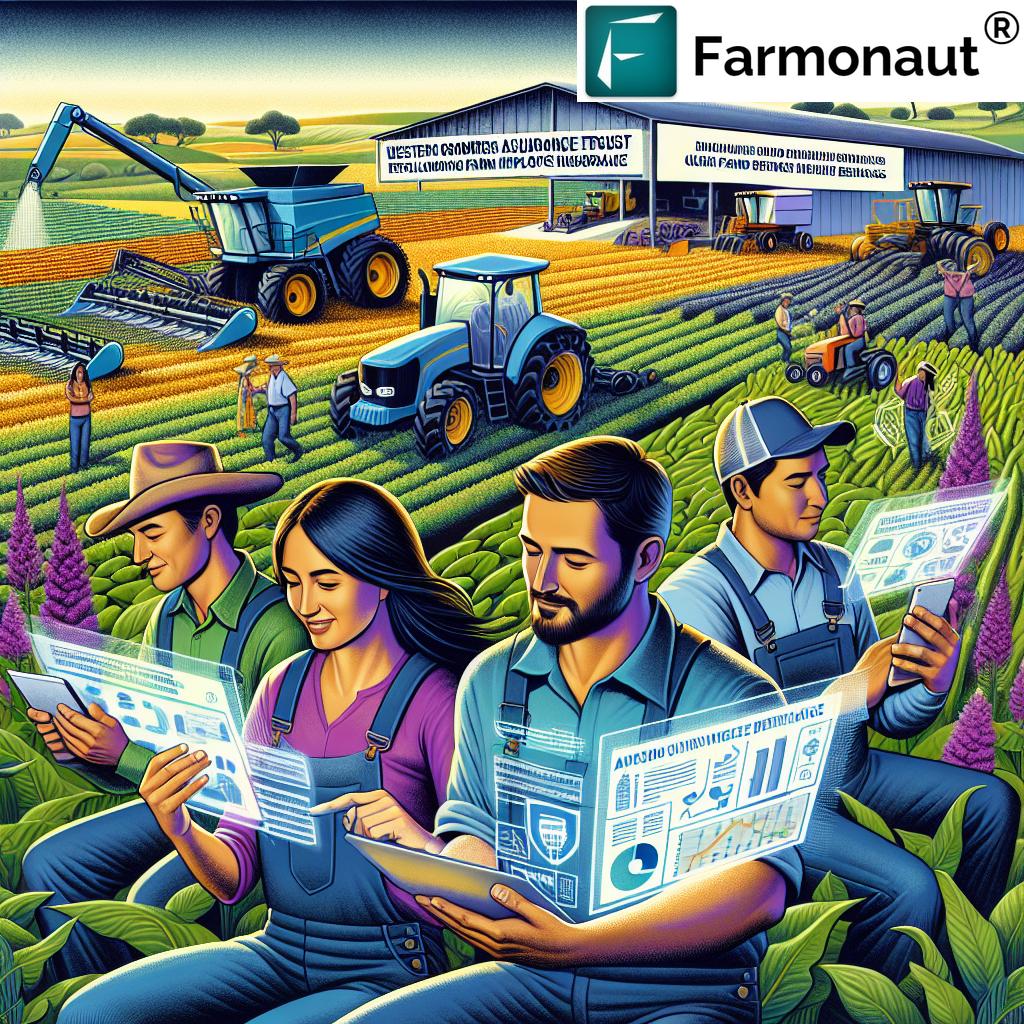Amid Climate Crisis: Global Seed Vault Protects Diversity
“The Svalbard Global Seed Vault stores over 1.2 million seed samples from nearly every country worldwide.”
Introduction: Facing Agricultural Challenges in a Changing Climate
Escalating climate threats pose critical challenges to global food security. With rising temperatures, changing precipitation patterns, and frequent natural disasters, agricultural biodiversity is under unprecedented stress. Today, the future of our global food supply hinges on the preservation of crop diversity—ensuring that we can restore, cultivate, and support agricultural systems when catastrophic events occur. Enter the Svalbard Global Seed Vault: a fortress of genetic wealth that stands as humanity’s ultimate safeguard.
Often dubbed the ‘Doomsday Vault,’ this Norwegian marvel on Spitsbergen Island is no ordinary facility. It’s an essential insurance policy for agricultural resilience, sheltering more than 1.3 million seed samples on behalf of every community, nation, and region worldwide. As we explore its purpose, design, and impact, we’ll discover what makes the seed vault pivotal in genetic resource conservation and crop diversity preservation.
By examining the seed vault’s role in preserving crop varieties and enabling the development of climate-resilient seeds, we can grasp the depth of strategy and collaboration required to overcome our era’s defining environmental challenges.
Establishment and Purpose of the Svalbard Global Seed Vault
Foundation in Norway’s Arctic: Spitsbergen Island, Svalbard Archipelago
The Svalbard Global Seed Vault was established in 2008 in the permafrost-laden mountains of Spitsbergen, Norway, inside the high Arctic circle. Its purpose: to provide a secure, remote shelter for genetic material—duplicates of seeds from gene banks around the globe. This facility acts as the world’s ultimate backup mechanism in the face of potential disasters, conflicts, or technological failures that could compromise regional or national seed banks.
Managed through an agreement among the Norwegian government, the Crop Trust, and the Nordic Genetic Resource Center (NordGen), the vault ensures global, regional, and indigenous depositors that our common legacy—agricultural biodiversity—remains protected for future generations.
- Located in permafrost, utilizing natural cold for optimal preservation
- Built to withstand a multitude of potential threats and catastrophic events
- Designed as a ‘fail-safe’ backup for the world’s most essential food seeds
Why Is This Critical?
- Crop failures from climate change, wars, or disasters can devastate food supply
- Genetic resource conservation is vital for the future development of new, resilient crop varieties
- Maintaining a wide genetic pool is essential for food security and sustainable agriculture
Design and Security Features: Withstanding Nature’s Extremes
Nestled deep within a mountain in Svalbard and covered by layers of rock and permafrost, the Seed Vault leverages its Arctic location to maintain a constant temperature of -18°C. This is ideal for long-term seed preservation, as low temperatures slow down biochemical processes and extend the viability of stored samples to hundreds, possibly thousands, of years even if the power fails.
- Permafrost acts as a natural insulator, protecting samples during technological failures.
- The vault’s location—130 meters deep within the mountain—provides exceptional safeguards against natural and man-made disasters.
- Thick rock walls and remote Norwegian Arctic isolation minimize human interference.
- Three separate air-tight chambers, advanced digital monitoring, flood barriers, and access control systems.
The World’s Insurance Policy Against Catastrophic Event Seed Backup
Should regional gene banks encounter catastrophic events—from wars like in Syria, to earthquakes, floods, or cyber-attacks—the Svalbard Global Seed Vault is positioned as humanity’s insurance policy. Its design means that even in extended power failures or extreme scenarios resulting from climate change, the seeds remain protected and viable.
- Preserves duplicates of vital crop genetic material
- Acts as a backup for over 1,700 gene banks worldwide
- Ensures we can restore and cultivate crops after global catastrophes
Global Participation and Deposits
By June 2025, the seed vault proudly conserves 1,355,591 accessions representing every continent—13,000 years of agricultural history stored under one Arctic archway. From indigenous communities to national and international gene banks, an unprecedented collaborative spirit unites the mission.
- Countries like Bolivia deposited seeds from 125 local farming families, safeguarding native crops for humanity.
- Chad contributed 1,145 samples of crops resilient to high temperatures and erratic rainfall—demonstrating the seed vault’s role in climate-ready preservation.
- Depositors include the International Rice Research Institute, CGIAR centers, and regional seed banks managing diversity of rice, wheat, maize, and lesser-known indigenous crops.
- Accessions represent vital material for restoring agriculture worldwide in times of disaster.
Depositing seeds isn’t simply about volume—it’s about capturing the widest spectrum of genetic diversity: heat tolerance, drought resistance, pest resilience, nutritional enhancement, and other essential traits.
Comparative Overview: Key Crop Collections & Their Climatic Resilience in the Svalbard Global Seed Vault
| Crop Type | Estimated Number of Seed Varieties | Major Geographic Origins | Main Climatic Resilience Traits | Current Global Relevance |
|---|---|---|---|---|
| Wheat | ~200,000 | Middle East, Europe, North America, South Asia | Drought tolerance, rust resistance, frost tolerance | ~19% of world calorie intake |
| Rice | ~150,000 | East/Southeast Asia, South Asia, West Africa | Submergence, salinity, heat stress | Feeds >50% of global population |
| Maize | ~140,000 | Central America, USA, Africa, China | Drought resistance, pest resistance, heat tolerance | World’s most produced grain |
| Barley | ~70,000 | Middle East, Russia, Scandinavia | Cold and drought resilience | Crucial to food & beverage industries |
| Potato | ~25,000 | Andes (Peru, Bolivia), Europe | Blight resistance, cold hardiness | Staple root crop worldwide |
| Beans & Legumes | ~60,000 | South America, Sub-Saharan Africa, South Asia | Drought resistance, nitrogen-fixation | Key source of plant-based protein |
| Sorghum & Millet | ~50,000 | Africa, India, Central America | Extreme heat, drought resilience | Vital in semi-arid food systems |
| Indigenous/Underutilized Crops | ~200,000+ | Every continent | Rich source of unique adaptive traits | Diversity for future breeding & resilience |
This diversity in the Svalbard Global Seed Vault underpins the development of climate-resilient seeds and ensures humanity always has access to the genetic material needed to cultivate and restore agriculture after disaster.
“Located in Norway, the Seed Vault can withstand natural and man-made disasters, preserving seeds for thousands of years.”
Role of the Seed Vault in Climate Change and Agriculture
Preserving Crop Diversity for the Future of Food Supply
With climate change accelerating, agriculture worldwide is facing new obstacles. Erratic temperatures, floods, droughts, pest surges, and soil degradation have made robust food security more uncertain than ever. Here, the seed vault acts as a critical safeguard for restoring, adapting, and securing crop production for future generations.
- Preserving a wide range of genetic diversity means we can continually breed and develop new crops adapted to changing climates.
- Provides raw material to address challenges like drought, floods, pests, and disease outbreaks, ensuring resilient supply chains.
- Supports traditional and indigenous farming—often home to essential climate-adaptive traits overlooked by commercial breeding.
The Svalbard Global Seed Vault not only helps countries recover from catastrophic events but also future-proofs humanity’s food system through the preservation of diversity and the genetic building blocks we need to overcome whatever environmental crises come our way.
Collaborative Global Networks and Gene Banks
The Svalbard Global Seed Vault operates as the backbone of an international network of over 1,700 regional, national, and international seed banks. These facilities share a common vision: preserving agricultural biodiversity and safeguarding the world’s food supply.
- The Crop Trust and Nordic Genetic Resource Center administer the seed vault and offer technical and financial support for smaller gene banks worldwide.
- Deposits from every geographic region, reflecting unique agricultural histories and traditions.
- Collaborative research fosters innovations in crop breeding and resilience—empowering all nations to access and benefit from the world’s collective genetic legacy.
Collaboration is crucial. For example, when the Aleppo gene bank was threatened by conflict, its backup seeds in Svalbard allowed the International Center for Agricultural Research in the Dry Areas (ICARDA) to re-establish its collection and continue vital research.
In a world of escalating threats and climate change and agriculture challenges, this type of cross-border support ensures that no single nation bears the burden—or risk—for lost genetic material.
Challenges Facing the Seed Vault and Future Directions
Despite its robust design and growing collections, the Svalbard Global Seed Vault faces challenges—primarily the need for increased funding and resources to maintain and expand its operations.
- As diversity in stored samples expands, so do facility upkeep, logistics, and monitoring costs.
- In 2024, the Crop Trust highlighted the need to more than double its endowment (currently $300 million) to truly support global seed banks and ensure backup for the world’s entire agrobiodiversity.
- International engagement, governmental investment, and public awareness about the importance of seed preservation are essential in mobilizing this funding.
Without adequate support, the vault’s capacity to act as a critical safeguard may be jeopardized as climate, conflict, and technological threats become more severe.
Farmonaut Perspective & Digital Solutions for Climate-Resilient Agriculture
At Farmonaut, we recognize that the preservation of crop diversity is essential—especially as climate change brings new threats to agriculture worldwide. While physical seed vaults like Svalbard ensure a backup of genetic resources, we believe that digital innovation is equally critical in mitigating ongoing environmental challenges.
- We empower farmers and agribusinesses globally with satellite-based crop health monitoring—using NDVI analysis, soil moisture tracking, and custom AI advisories.
- Our real-time advisory systems help optimize resource use, reduce crop losses, and promote sustainable cultivation—preserving resources and diversity in daily farm operations.
- By integrating carbon footprint monitoring and blockchain traceability, we support sustainability and transparent food supply chains.
- Our platform democratizes access to advanced agricultural technologies, allowing smallholder farmers worldwide to adapt more effectively to changing climates and emerging environmental concerns.
The mission that drives the Svalbard Seed Vault—safeguarding humanity’s future through genetic diversity—is mirrored in our commitment to empower every farmer with the data, advisory, and traceability tools they need for climate-resilient, sustainable agriculture.
Learn, Connect, and Grow with Farmonaut:
- API: Access weather and crop data for integration into agricultural apps and services
- API Developer Docs: Detailed technical documentation for easy implementation
- Manage large-scale farm operations with Farmonaut’s satellite-powered admin suite—enabling data-driven management on plantations, estates, and government projects.
Get Started with Farmonaut: Tools for Modern Agriculture
Farmonaut stands at the intersection of technology and sustainability in agriculture. Our services help modern farmers monitor crops, trace supply chains, manage fleets and resources, and optimize input use—all crucial to adapting to today’s and tomorrow’s environmental conditions.
- Crop Health Monitoring—detect drought stress, pest infestations, and optimize irrigation/fertilization using AI and satellite insights.
- Blockchain Traceability—increase consumer trust with transparent farm-to-table supply chain records.
- Resource and Fleet Management—maximize input efficiency, reduce emissions, and boost operational resilience.
- Carbon Footprinting—measure your ecological impact and drive sustainable change at every scale.
- Satellite-Based Verification—supporting insurance and crop loans by providing bankers with factual, updated field conditions and reducing risk.
Frequently Asked Questions
What is the Svalbard Global Seed Vault?
The Svalbard Global Seed Vault is a secure backup facility for the world’s crop genetic diversity. Located in the Norwegian Arctic, it stores duplicates of critical seed collections from global, national, and regional gene banks, safeguarding agricultural biodiversity for the future of food supply.
How does the Seed Vault ensure seeds remain viable for centuries?
By leveraging permafrost and deep mountain protection in Svalbard, the vault keeps seeds at a constant temperature of -18°C. Even in case of power failures, the natural cold preserves seed viability for hundreds or thousands of years.
What types of disasters does the Seed Vault protect against?
The Vault safeguards genetic resources against natural threats (earthquakes, floods), technological failures (power, cyber-attacks), man-made disasters (war, vandalism), and slow-moving crises driven by climate change.
Who can deposit seeds at the Svalbard Vault?
Depositors include international research centers, national and regional seed banks, local institutions, and, in some cases, indigenous communities—all working together to preserve a broad spectrum of crop diversity.
Why is preserving crop diversity vital for food security?
Genetic diversity allows breeders and farmers to develop climate-resilient seeds and crop varieties. Without it, our ability to adapt to changing environmental conditions and respond to catastrophic events would be gravely reduced.
How does Farmonaut contribute to agricultural sustainability?
We provide advanced, satellite-powered tools for real-time crop monitoring, advisory, traceability, and resource management, equipping farmers to tackle modern challenges and improve the sustainability of their agriculture.
Conclusion: Securing Our Agricultural Future
In the face of unprecedented climate change and escalating threats to global agriculture, the Svalbard Global Seed Vault stands as humanity’s critical safeguard—preserving the genetic diversity that underlies food and nutritional security for all. The joint commitment of the world’s nations, agricultural researchers, and innovative technology providers forms a resilient web, ensuring that our crops will thrive and adapt, no matter the challenges ahead.
At Farmonaut, we recognize the value of both physical and digital biodiversity preservation. As we assist farmers and agribusinesses via satellite-based analytics, traceability, and resource management tools, we honor the same global vision that the Svalbard Vault champions: a future where agricultural sustainability and global food security are not just goals, but realities.
- Preservation of seed diversity is our insurance policy against hunger and crisis.
- Modern technology, data, and cross-border collaboration remain keys to surviving and thriving in a changing agricultural world.
By combining meticulous genetic resource conservation with accessible digital services, the world can weather any storm—and cultivate hope for generations yet to come.


















